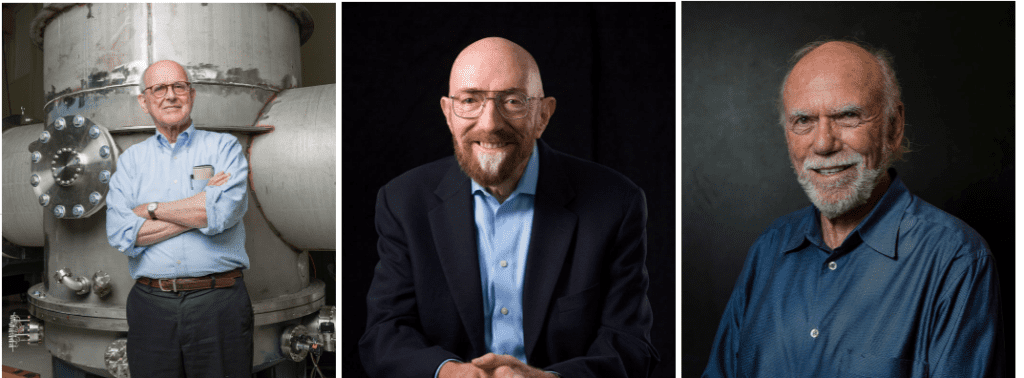Rainer Weiss, Barry C. Barish and Kip S. Thorne have won the 2017 Nobel Prize in physics for helping uncover one of the biggest mysteries in modern physics: Gravitational Waves.

The Nobel Prize
The prize was awarded “for decisive contributions to the LIGO detector and the observation of gravitational waves,” the committee said in a press release, with representative Göran K. Hansson adding that the discovery “shook the world.”
Indeed, who gets the Nobel Physics award is usually anybody’s guess, but this year, all the rumors leaned heavily towards gravitational waves. As much as good science is being done every year, it’s hard to rival something as groundbreaking as gravitational waves. However, since over a thousand scientists, researchers and technicians worked at the LIGO Scientific Collaboration, it wasn’t exactly clear which people will receive the prize. Half of the prize will go to Weiss, a professor at the Massachusetts Institute of Technology. The other half will be split by Barish and Thorne, both working at the California Institute of Technology.
The three were among the architects and founders of LIGO, the Laser Interferometer Gravitational-wave Observatory, along with the late Ron Drever, who unfortunately passed away this year. Many believe that had he lived, Drever would have also been awarded the prize.
Gravitational waves were first proposed by Einstein more than a century ago but had never been directly seen. At some point, Einstein himself started doubting their existence, but one of his assistants convinced him that mathematically, they should exist. But actually seeing them… that was a whole new ball game.
Finding gravitational waves
The Nobel prize winners weren’t the first people who thought of using interferometry (a group of techniques in which electromagnetic waves are superimposed, causing the phenomenon of interference, in order to extract information) to detect gravitational waves. It all started with U.S. physicist Robert Forward building a small interferometer in the 1960s. But it was Weiss, who once flunked out of college, who analyzed the technique thoroughly. He realized that you need a much bigger setup and kilometers-long interferometers. He also figured out what were the main sources of noise and how they could be best eliminated. That report became the foundation of LIGO, even though it was never officially published.

Though not without difficulty, Weiss managed to convince Thorne, who greatly pushed the project forward, especially when he hired Drever in 1979. But the difficulties were still immense. A typical gravitational wave would change the distance between two mirrors placed kilometers away by an incredibly small amount: one part in a billion trillion, less than the diameter of a proton. Weiss recalls that when he first presented the experiment to potential funders at the National Science Foundation (NSF), everyone thought they were out of his mind. But the project did, ultimately, receive funding — at least for a while. In 1994, the NSF was thinking of canceling the entire thing, when Barish stepped in. He made a significant design tweak and assumed leadership of the project until he stepped down in 2005.
“LIGO wouldn’t have happened without his leadership,” says Stanley Whitcomb, a physicist at Caltech and an original member of LIGO. “It was something that Rai[ner] and Kip couldn’t do.”
It was only in 2015 that LIGO first picked up evidence of gravitational wave. The culmination of so many decades of work was starting to shape up. Since then, gravitational waves have been spotted four times — the last time just a couple of months ago, a discovery confirmed by two separate detectors, LIGO and Virgo. It’s not every day that we manage to open a new window into the universe, but this is exactly what their research has done.
So it all started decades ago, but it finally came true. Weiss set out the plan. Thorne did the theory. Barish made it all come true in a moment when it seemed to go south. A thoroughly deserved Nobel Prize.
A gracious response
But the three researchers emphasized that over a thousand people have worked at LIGO over the years. Barish says it’s bittersweet that for such a complex project, only three people are honored.
“I have somewhat ambivalent feelings about the recognition of individuals when so much of this was a team effort,” he says.
Weiss says it’s strange to receive money for something you love doing.
“Receiving money for something that was a pleasure to begin with is a little outrageous,” he says. “The best way I can think of it is we’re symbols for the much bigger group of people who made [LIGO] happen.”
Weiss also said he will donate the prize money to MIT to help support students.


